Term 2 Chapter 3 | 4th Science - Plants | 4th Science : Term 2 Unit 3 : Plants
Chapter: 4th Science : Term 2 Unit 3 : Plants
Plants
Unit
3
Plants

Learning
Objectives
After learning
this lesson, students will be able to
• list out the parts
of leaf and their functions
• explain the process of photosynthesis
• describe the role of plants as a primary producer
• know about green and non green plants
• describe the features of flower
• list out the exotic plants and their role
• identify the edible part of different plants
Introduction
All living things
eat food. Food helps them grow and perform daily activities. We have seen
animals eating their food. But, have you ever wondered how plants get their
food? Plants produce their own food with the help of chlorophyll, a pigment
present in leaves. Humans and animals depend on plants for their food either
directly or indirectly. Let us learn more about plants in this lesson.
I.
Parts of a Leaf
Leaves are of
different shapes and sizes and have different parts. However, there are some
basic parts that are common in most of the leaves.
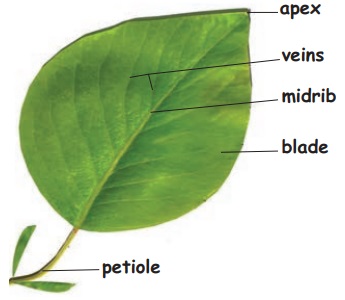
Blade
: The broad flat
part of the leaf (Lamina).
Apex
: The tip of the
leaf.
Midrib
: The midrib runs
along the centre of the leaf.
Veins
: Veins are branch
out from the midrib. They are the framework of hollow tubes that carry water
and minerals.
Petiole: This part joins the leaf to the
main stem.
Stomata : Stomata are tiny openings or pores mostly found at the base of the leaves. Air enters and leaves the plant through these openings. Stomata helps the plants to breathe. Stomata are used to exchange gases.
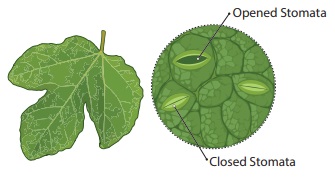
1.
Leaf as food factory
Plants need food
but they never depend on people or animals to provide them. Most of the plants
are able to make their own food through a process called photosynthesis.
Photosynthesis =
Photo (light) + synthesis (make)
Photosynthesis is a process by which plants make their food
using chlorophyll water, carbon dioxide in the presence of sunlight. Let us see
how this process is organized with in the plants.
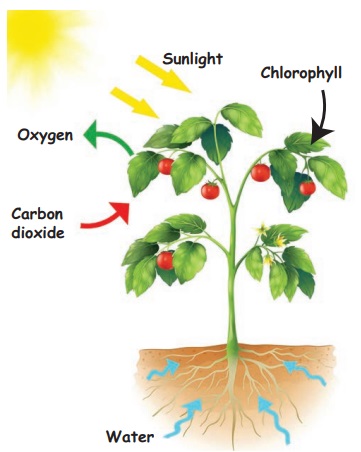
Think and answer
• Which part of the leaf collects carbon
dioxide?
Answer: Small pores in the leaves
(Stomata)
• Which part of the
leaf transports water?
Answer: Veins
Water: Water is absorbed by the roots
and is passed to the leaves through the tubes.
Carbon dioxide: Carbon dioxide in the air passes through small
pores in the leaves.
Sunlight: A green pigment in the leaves
help them to trap sunlight. This pigment is called chlorophyll.
Most leaves are green in colour because of this green pigment.
Through
photosynthesis plants produce the food and release oxygen into the air.

As plants prepare food for themselves and also for other living things, they are called primary producers.
Without primary
producers, living things that are not capable of producing their own food and
will not be able to live.
Think and answer
Why
would living things not be able to live without plants?
Answer: Only plants can produce food on their own. They are primary
producers. All living things depend on plants for food. So they cannot live
without plants.
Try to Answer
Fill in the blanks by rearranging
the letters in the bracket.
1. During photosynthesis plants
releases oxygen (egxyno).
2. Plant is a primary producer (tanpl).
3. Stomata are seen in the lower
(owler)
surface of the leaf.
4. Pigment involved in the food
synthesis is chlorophyll (phllylochor).
More
to know
Plants
like cactus do not have leaves. Their food is made in their green stems.
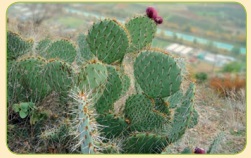
Let us do
Take two potted plants. Keep one
in sunlight and other in a fully covered box. Water them regularly. After a
week observe the plants.
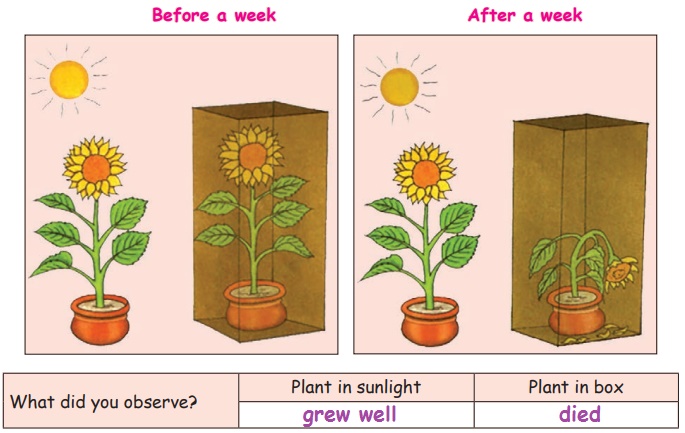
II.
Classification of Plants
Plants are
classified in many ways based on stems, life span, seeds, flower and colour. In
this session we will study about the classification of plants based on the
flower and colour (pigment).
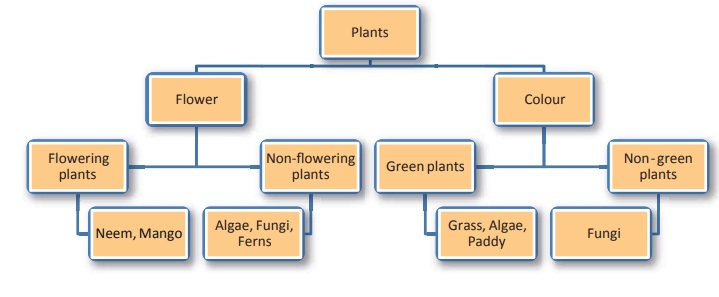
1. Flowering and Non-flowering
plants
Flower is the
most important part of many plants, because it is involved in reproduction. But
some of the plants are not having flower. These plants are also reproduce in
different modes. Based on this plants, can be classified into two types.
• Flowering plants
• Non-flowering plants.
Flowering
plants
Plants bearing flowers are called flowering plants. It reproduce by sex cells or gametes and
produce seeds. Seeds produce new plants. Eg – Mango, Neem, groundnut, paddy.
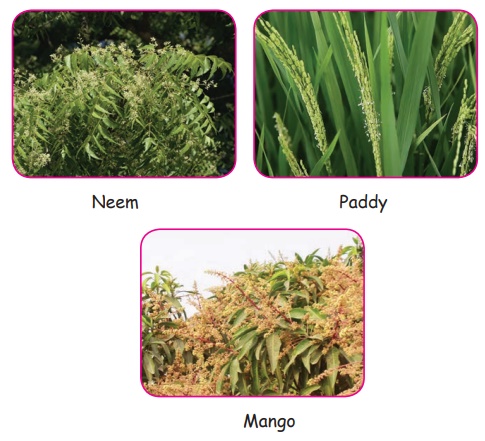
Non-flowering
plants
Plants without flower that can reproduce are called non-flowering plants. These plants do not produce seeds. They reproduce
by a special structure called spores. E.g. Algae, Fungi, ferns.
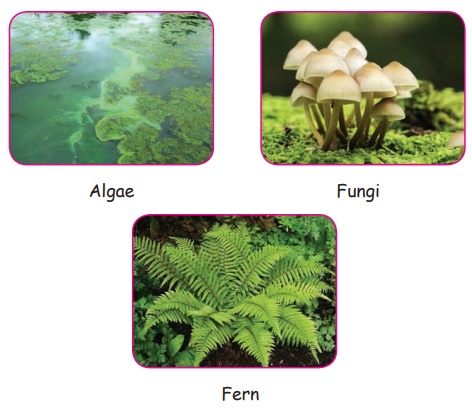
Let
us do
List
out the flowering and Non-flowering plants in your surrounding.

Flowering
plants : Rose,
Drumstick, Brinjal
Non-flowering
plants : Conifers, Fungi, Ferns
2. Green and Non-green plants
The most
important pigment
present in plants are called chlorophyll. Based on the colour present in the plant, they are
divided into two groups such as Green and Nongreen plants.
Green
plants
Plants containing
green pigments are called green plants. It looks green in colour. They prepare
their own food with the help of them. It depends atmosphere, light and pigment
for food preparation. Green plants are commonly called autotrophs. E.g. Grass, Paddy, Algae.
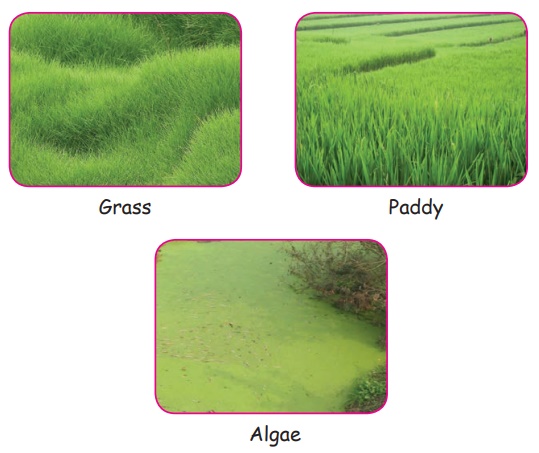
Non-green
plants
Plant that lacks chlorophyll pigment
and looks not green are called non-green plants. They cannot prepare their food. These
plants depend on other organism for their food and living place. These are
commonly called heterotrophs.
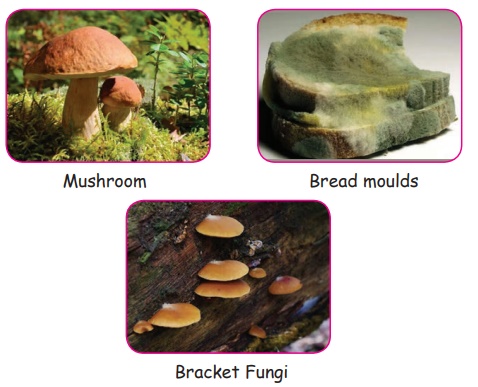
Let us do
List out the places where you see
the non-green plants
1. Near dead and decaying plants.
2. Fallen logs.
Try to Answer
Fill in the blanks.
1. Algae is an
example for non flowering plant.
2. Plants are classified based on
pigment and flower of the plant.
3. Heterotrophs depend on other organism to live and get their
food.
4. Autotrophs use carbon dioxide, sunlight and chlorophyll to prepare their own food.
III.
Parts of Flower
Have
you seen flowers? Try to answer the questions given below
a) Which is your
favourite flower? Paneer rose
b) What is the
colour of the flower? Light pink
c) How does it
smell? Paneer smell
The four visible
parts of a flower are explained below.
Sepal: Sepals are leaves that protect
the flower while it is still a bud. Sepals are usually green in colour.
Petal: Petals are often bright coloured.
Their main job is to attract insects such as bees or butterflies, to the
flower. The insects help the flowers in the transfer of pollen grains.
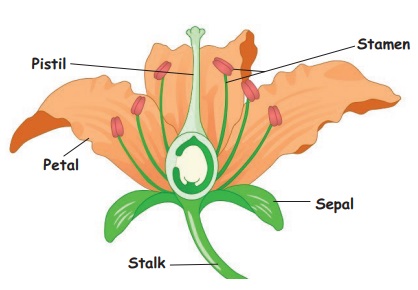
Stamen: Stamen can be seen at the centre
of a flower. They contain pollen grains that help the plants to multiply. It is
the male part of a flower.
Pistil: Pistil is also seen at the centre of the flower. The pistil uses the pollen to help the flower become the fruit. It is the female part of a flower.
More
to know
The
largest flower in the world is Rafflesia. This rare flower is found in the
rainforests of Indonesia.
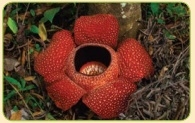
Try to Answer
Fill in the blanks.
1. Sepals protect the flower
while it is still a bud.
2. Stamen contains pollen grains.
3. Pistil is the female part of a flower.
Let us do
Bring few hibiscus flowers to the
classroom. Distribute the flowers to children. Introduce the parts of the
flower to them. Then, ask them to observe and feel the different parts of the
flower and tell them to record their observation.
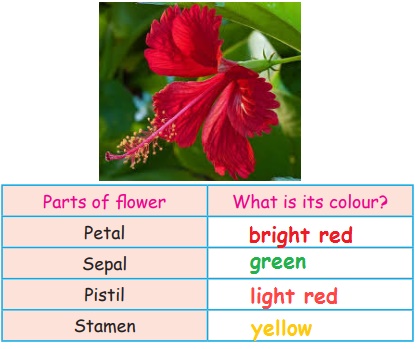
Petal: bright red ; Sepal: green ; Pistil: light red ; Stamen: yellow
III.
Seasonal Flowers
The change in
climate that occurs periodically is called seasons.
There are four
general seasons - Spring, Summer, Autumn and Winter.
Most flowers bloom in a specific season. Hence, they are called seasonal flowers.
Flowers
that bloom in winter

Flowers
that bloom in summer
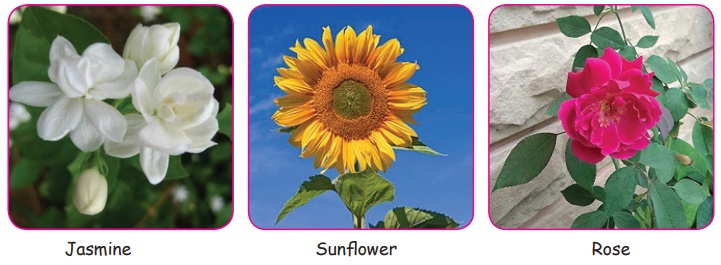
Flowers
that bloom in autumn and spring

More
to know
Firecracker
flowers bloom in all seasons
Kurinji
flower blooms once in 12 years

Think and answer: Can you name the four seasons?
Answer: Summer, Spring, Autumn, Winter
IV.
Exotic Plants
The plants that
are growing outside its native area either purposefully or accidentally are
called exotic plants.
Most of these
plants are brought to new areas for decoration purposes. Some of them are given
below.
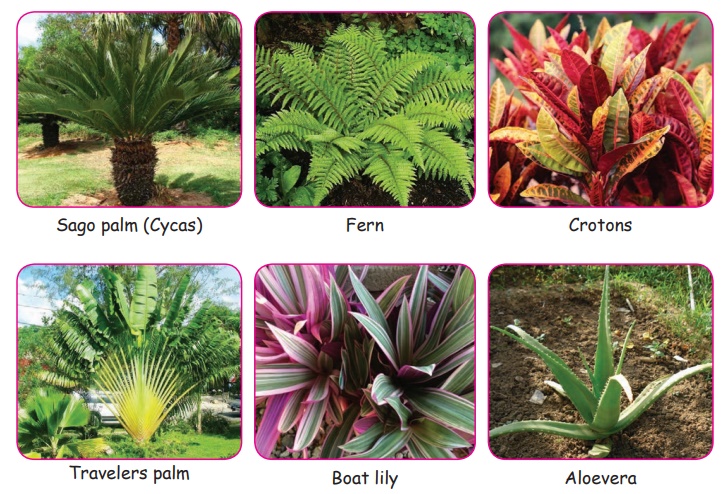
More to know
Parthenium plant accidentally grow in a new
native. This plant expands its range and disturbs the cultivation areas. The
pollen of this plant is allergic in nature. So, don‛t touch this plant
wherever you see.
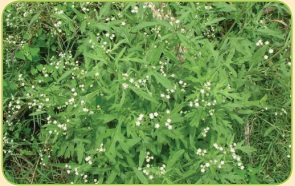
Try
to Answer
1.
Find the odd one.
i.
December, Tuberose, Tulip.
ii.
Saffron, Dahlia, Rose.
iii. Rose,
Boat lily, Crotons.
N.B : i) December and Tuberose bloom in winter.
ii) Saffron and Dahlia bloom in autumn.
iii) Boat lily and Crotons are exotic plants.
Let us do
Collect various ornamental plants
and plant in your school garden or at home.
V.
Plants as Food
Humans and other
animals often use plants as food. Plants we eat are edible. Edible parts of
some plants include leaves, stems and roots. We also eat fruits produced by
plants.
Edible
parts of plants
All the parts of
different plants are edible, that is, we can eat them as food.
Roots
as food
Many plants store
excess food in their roots. They have thick and swollen roots. These roots are
used as food. Some of them are given below.

Stems
as food
In some plants
the stem stores the excess food in it. Potato, onion, ginger are underground stems that
we eat. Some of them are given below.
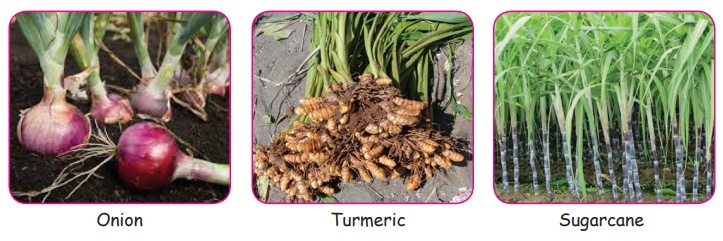
Leaves
as food
Leaves of some
plants are used as food. In some plants extra
food is stored in leaves. We eat the leaves of plants like cabbage. Some of the leaves used as food are
given below.

Flowers
as food
Flowers are the
most attractive part of the plant. Many flowers are used as food. Some of them
are given below.

Fruits
as food
Many fruits are
used as food. Fruits are rich in vitamins and
minerals. They keep us healthy. All fruits can be eaten raw.

Grains
as food
Grains of pulses,
cereals and pods are the commonly eaten seeds. They are rich sources of carbohydrates and proteins.

Try to Answer
Fill in the blanks.
1. Cauli flower is
used as food.
2. Stem part of the potato plant is used
as food.
3. Stem of the onion / ginger stores food in it.
4. Seeds are rich in carbohydrates and proteins.
More to know
Trees are the longest living
organism on earth. Bamboo plants can grow upto 90cm in one day.
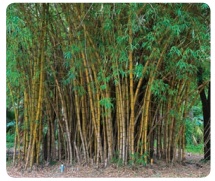
Let us do
Complete the table to show which
parts of the plant we eat.
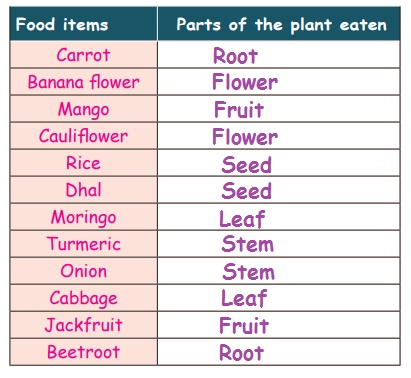
Related Topics